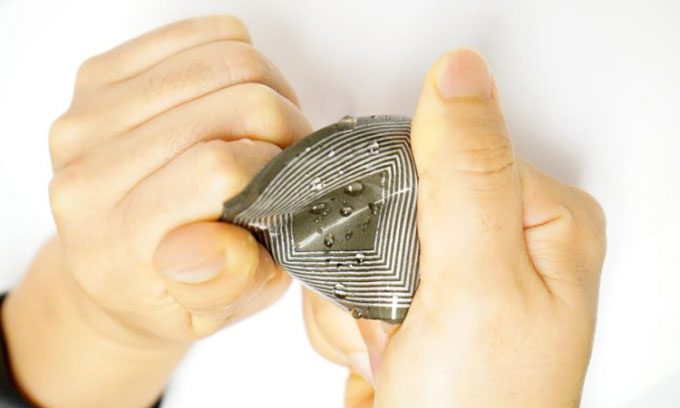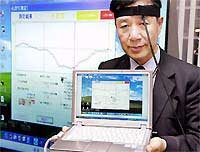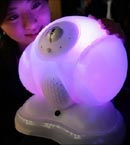Experts in the U.S. develop a flexible, waterproof device that can be worn on the body to generate energy efficiently.
Biological engineers at the Samueli School of Engineering at the University of California, Los Angeles (UCLA Samueli) have created a soft and flexible bioelectronic device capable of producing electricity, Science Daily reported on September 30. This device converts human body movements, from bending elbows to wrist pulses, into electricity. The new research was published in the journal Nature Materials.

UCLA Samueli’s flexible and waterproof generator. (Photo: Jun Chen/UCLA)
The piezomagnetic effect is the change in magnetization of a material when tiny magnets are continuously pressed together and then pulled apart due to mechanical stress. The research team discovered that this effect can exist in both soft and flexible systems, not just rigid ones. They used extremely small magnets scattered throughout a silicone mold as thin as paper to create a magnetic field that changes in intensity as the mold moves. When the intensity of the magnetic field changes, electricity is also generated.
“The unique aspect of this technology is that it allows people to move comfortably while the device is attached to the skin. Additionally, because it relies on magnetism rather than electricity, humidity and sweat do not reduce its effectiveness,” said Jun Chen, the lead researcher and a biomedical engineering expert at UCLA Samueli.
Chen and his colleagues fabricated a small, flexible piezomagnetic generator from a silicone mold with platinum catalysts and nano magnets. They then attached it to a test subject’s elbow using a soft, stretchy silicone strap. The piezomagnetic effect they observed was four times stronger than similar-sized systems made from rigid alloys. As a result, the device generated a current of 4.27 mA per cm2, which is 10,000 times more efficient than the second-best device.
In fact, the piezomagnetic generator is sensitive enough to convert circuit waves in the human body into electrical signals, while also functioning as a waterproof heart rate monitor that is self-powered. The electricity generated can also power other wearable devices, such as sweat sensors or thermometers.




















































